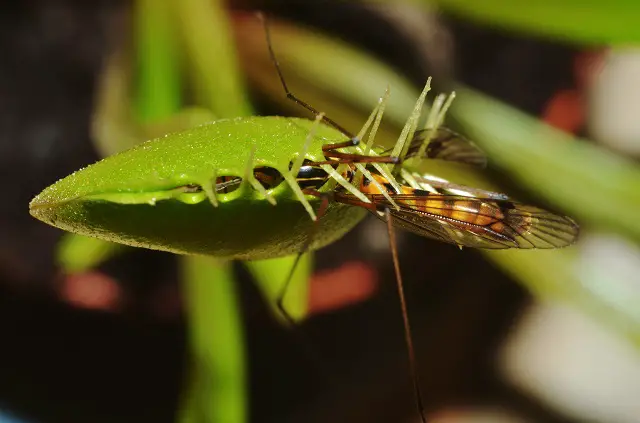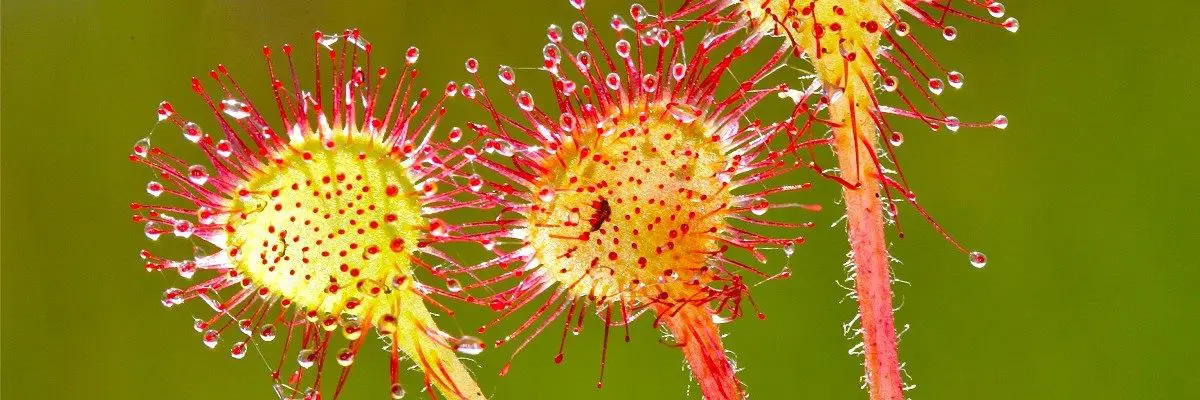Like their more traditional relatives, carnivorous plants do fuel themselves through photosynthesis. In addition to sunlight, water, carbon dioxide, and various elements like nitrogen are also essential elements. Plants normally absorb these nutrients through their roots. However, soil quality isn’t always favorable, with bogs and other wetlands providing scant amounts of nitrogen. Adapted in such environments, carnivorous plants consume insects and small animals to supplement nitrogen.
There is, however, a downside to this clever adaptation. When prey is trapped and digested during the trapping and digesting process, less energy is left for photosynthesis. If this energy is not available, then plants will starve. There is a significant difference between the rate of photosynthetic activity of carnivorous plants and that of regular plants. A second factor that drives the evolution of meat-eating in plants is the availability of sunlight.
How photosynthesis works
The process of photosynthesis is the process of producing sugar and oxygen from three chemical ingredients: carbon dioxide, light, and water. Sugar and oxygen are created due to a series of chemical processes.
Two processes are involved in photosynthesis. The ‘photo’ component refers to the process started by light. “Synthesis” is the process of making sugar through a series of steps known as the Calvin cycle.
Chloroplasts are responsible for both processes. There is a special structure contained within the cell of plants, referred to as an organelle. The structure is composed of layers of membranes named thylakoids. These are the places where light reactions occur.
So Why Can’t Carnivorous Plants Just Use Photosynthesis?
Micronutrients and minerals are also essential to plants, which they typically receive through their roots. Basically, they would grow roots into the soil. Those minerals would be drawn up with the water they take in and then used. Proteins, amino acids, and other macromolecules produced by fungi in the soil will also be brought in via this method.
In contrast, nutrient-poor habitats are common for carnivorous plants. Therefore, most nutrients have leached away in highly nutrient-scarce regions where water is abundant. The result is that many of the trace elements required for plants to grow normally can’t be found in significant quantities in the soil. Because insects are a source of iron, protein, and other micronutrients, the plants have adapted to use them to supplement soil-based deficiencies. These plants have gone on to evolve and obtain nutrition by catching insects.
Because of this, it can now exploit a niche in the environment that other plants cannot. To supplement their diet, even though they are able to photosynthesize, they have looked to catch insects that they consume to supplement their nutritional needs.
Where Can Canivours Plants Be Found In The Wild?
Carnivorous plants generally prefer wet, low-nutrient habitats, such as bogs, swamps, water bodies, watercourses, forests, and rocky or sandy areas. In addition to sundews, butterworts, and bladderworts, many species of carnivorous plants are native to the United States.
A common butterwort (Pinguicula Vulgaris) grows throughout the United Kingdom, especially in bogs, fens, and wet heathlands. These plants produce purple blooming flowers on long stalks to help prevent pollinating insects from being eaten from their carnivorous leaves. A sticky mucilage coating the leaves of this plant secures its prey. The Attenborough pitcher plant (Nepenthes Attenborough) can only be found near Mount Victoria on Palawan Island in the Philippines. This is one of the largest of all carnivorous plants, growing 1.5 meters tall and producing 30 centimeters in diameter pitchers – and it can feed on rodents.
How do carnivorous plants attract their insects?
Insects are lured into carnivorous plants’ traps using a variety of strategies. Some plants produce nectar that smells like flowers and has vivid colors that are similar to flowers. Another type blends seamlessly into the landscape, resulting in their prey stumbling upon them. While trapping organs may appear as flowers due to their intense coloration, they are cleverly adapted leaves.
Carnivorous plants produce flowers at the ends of their stalks, which are away from enticing and potentially lethal digestive organs to prevent pollinating insects from being eaten.

What Are Some Types Of Carnivorous Plants?
Drosera
In the Drosera genus, there is a plant species called ‘sundews,’ They are also among the most commonly found carnivorous plants. There are tentacles all over these sundews, which resemble flowers. These tentacles have a sticky substance that attracts insects due to their glittering appearance. They become trapped as soon as they touch the sticky dew-covered tentacles. Insects are digested, and nutrients are extracted when the tentacles close around them.
Dionaea muscipula
Venus flytraps, or Dionaea muscipula, are among the most common carnivorous plants globally. Leaves contain glands that release digestive enzymes that break down insects, and the leaves absorb nutrients. Insects are lured into their leaves by their sweet nectar. As soon as the insect steps into its “mouth,” it triggers tiny hairs in the plant, which stimulate impulses and cause the leaves to close. Venus Flytraps are often sold as pets these days, and they can be purchased online.
Nepenthes
The genus Nepenthes includes tropical pitcher plants and Monkey Cup plants. The leaves of these plants are brightly colored, and they look like pitchers. The plant uses its bright color and nectar to attract insects, but because of its waxy scales, the inside of the leaves can be quite slippery. Upon landing on the leaves, the insects sink to the pitcher’s bottom, where digestive enzymes await them. In some species, pitcher-like leaves contain digestive enzymes as well. However, water may drown the insects. Sarracenia, commonly referred to as the North American Pitcher Plant, is similar.
Utricularia
Some Utricularia species are known as Bladderworts, which are carnivorous plants. The leaves and stems of the plant have sacs like bladders that give it its name. The digestive enzymes in the sacs break down the insects that are trapped. When insects trigger tiny hairs near these trap doors, they trigger a vacuum effect that works like trap doors.


